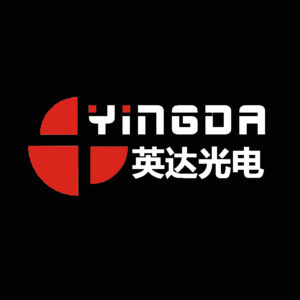Although there are less than 10 types of commonly used communication optical cables, even professionals in the design, construction and management of communication lines have difficulty telling the type of a certain type of optical cable and what a certain type of commonly used optical cable represents. For example, do you know what the FTTH optical cable model is? What kind of optical cable is GYDGA?
Let’s take the optical cable model GYDTA 192B1.3 as an example to explain how commonly used optical cable models are named.
GY indicates that the optical cable is classified as indoor (field) type. Optical cables are divided into several major categories according to their applicable occasions: outdoor, indoor and indoor and outdoor. Each major category is also subdivided into sub-categories. Commonly used fiber optic cable classifications also include:
GYC──Air-blown miniature outdoor optical cable for communications;
GJ──Indoor optical cable for communication;
GJX──Indoor butterfly drop optical cable for communications;
GJY──Indoor and outdoor optical cable for communication;
GD──Optical and electrical hybrid cable for communication.
The reinforcing members in optical cables usually use metal. When non-metal reinforcing members are used, the letter F is usually added after the classification code of the optical cable. For example: GYFTY means non-metal reinforced core optical cable.
D indicates that the optical fiber in the optical cable is organized as an optical fiber ribbon. The organizational mode of the optical fiber in the optical cable includes:
(unsigned) – discrete;
D——Fiber optic ribbon type;
S – Cured optical fiber bundle type.
Cured optical fiber bundle type refers to a bundled optical fiber distribution structure that is cured to form an integrated, relatively fixed relative position. Many people regard discrete optical fiber structures as bundle structures. In fact, bundles refer to something else.
T indicates that the water blocking method of the optical cable is filled. The water-blocking structure of optical cables includes:
(unsigned)──fully dry;
HT──semi-dry type;
T──filling type.
The filled water-blocking structure means that the cable core of the optical cable is completely filled with water-blocking grease, and the semi-dry type means that the cable core of the optical cable is partially filled with water-blocking grease; taking the loose-tube stranded optical cable as an example, the filled loose-tube stranded optical cable It means that not only the loose tubes are filled with water-blocking grease (i.e., fiber paste), but the gaps between the loose tubes are also filled with water-blocking grease (i.e., cable grease). Semi-dry layered optical cables are usually filled with fiber paste inside the loose tube, and other parts of the cable core are not filled with cable paste, but are replaced with dry water-blocking materials such as water-blocking yarn.
GYDTA is a layer-stranded, circular, non-self-supporting optical cable. The optical fiber in the cable is a plastic loose-tube coating structure. Since these are the most common structural types of optical cables, they are not represented by symbols. Other commonly used cable cores and fiber optic cable derivatives include:
J──The optical fiber has a tight-buffered coating structure.
G──The cable core is a skeleton structure;
X──The cable core is a central tube structure;
C──The load-bearing structure is a self-supporting structure;
8──The cross-sectional shape is an “8” shape;
A indicates that the optical cable sheath is an aluminum-plastic bonded structure and the sheath material is polyethylene. Common structures and materials for optical cable jackets also include:
S──Steel—plastic bonded sheath;
W──Steel-plastic bonded sheath with parallel reinforcements.
Y──polyethylene sheath, which can be omitted when combined with the sheath structure code;
V──polyvinyl chloride sheath;
H──Low smoke halogen-free sheath.
There may also be an outer sheath on the outside of the optical cable sheath, such as directly buried optical cables and underwater optical cables. The outer sheath of an optical cable is represented by two sets of numbers. The first set represents the armor layer, and the second set represents the outer jacket layer.
The number 192 represents the number of optical fibers in the optical cable, B represents single-mode fiber (A represents multi-mode fiber), and 1.3 represents G.652D single-mode fiber.
As can be seen from the above introduction, the model number GYDTA 192B1.3 represents: metal reinforced component, optical fiber ribbon loose tube layer twisted filled type, aluminum-polyethylene bonded sheath outdoor optical cable for communication, including 192 B1.3 single-mode optical fibers

